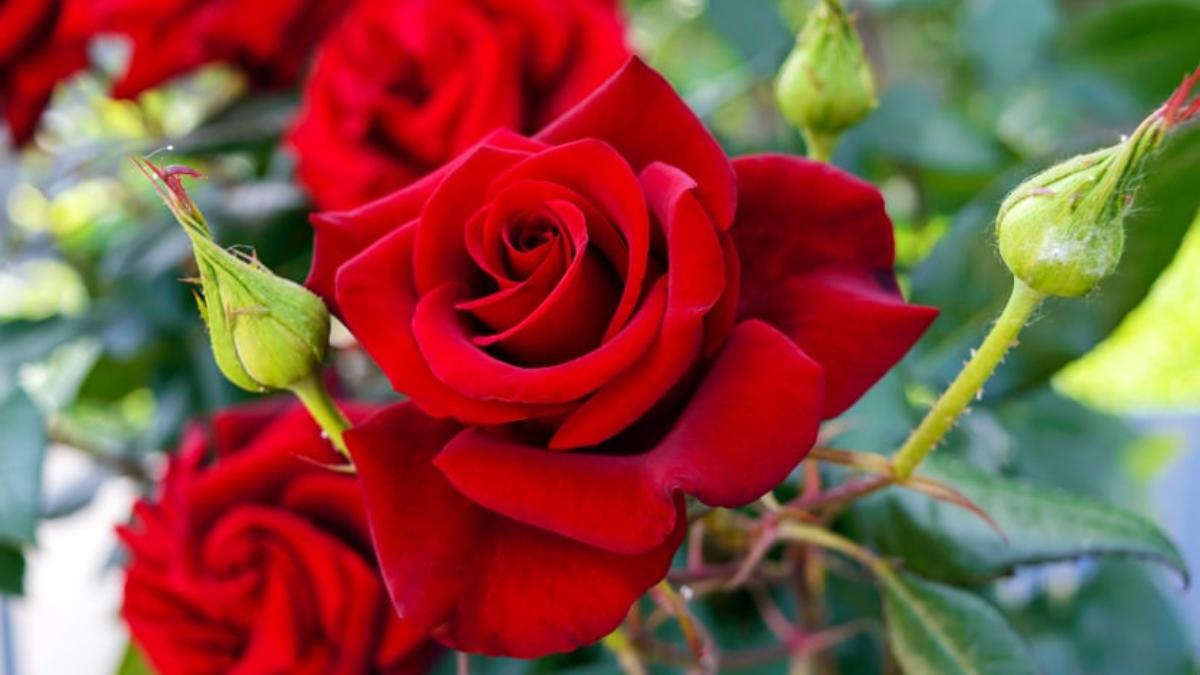Roses are undoubtedly one of the most popular choices for gardeners, and for good reason. Their elegance and captivating aromas can transform any garden into a visual paradise. Additionally, growing roses can be a rewarding experience that offers numerous benefits. Not only do roses provide aesthetic appeal, but they also attract pollinators, contribute to biodiversity, and can even improve the air quality in your surroundings. By following the secrets shared in this article, you will be able to cultivate vibrant roses that will be the envy of your neighborhood.

Choosing the Right Roses
Before you embark on your journey to grow roses, it is essential to understand the different types available. From hybrid teas to climbers and shrubs, each variety has its unique characteristics. Consider factors such as climate, soil conditions, and personal preferences when selecting roses for your garden. It is also vital to choose roses that are suitable for your specific region to ensure optimal growth and blooming.
Site Selection and Preparation
Selecting the ideal location for your roses is crucial for their success. Roses thrive in areas with ample sunlight, good air circulation, and well-drained soil. Prepare the soil by incorporating organic matter and ensuring proper drainage. Conduct a soil test to determine if any amendments are needed to create the optimal growing conditions for your roses.
Planting Roses
Timing is crucial when it comes to planting roses. Ideally, it is best to plant them in early spring or fall when the temperatures are mild. Dig a planting hole that is wide and deep enough to accommodate the rose’s roots comfortably. Add organic matter and fertilizer to the hole before placing the rose in it. Proper spacing and planting depth are essential factors to consider during the planting process.
Watering and Irrigation
Proper watering is vital for the health and vitality of roses. Establish a regular watering schedule and ensure the soil is evenly moist, but not waterlogged. Mulching around the base of the plants helps retain moisture and suppress weeds. However, be cautious not to overwater, as this can lead to root rot and other issues.
Fertilizing and Nutrient Management
To promote healthy growth and abundant blooms, roses require proper nutrition. Choose fertilizers specifically formulated for roses and apply them at the right time and dosage. Organic matter and compost play a crucial role in enriching the soil and enhancing nutrient availability for roses.
Pruning and Training
Pruning is an essential practice that helps maintain the shape, vigor, and blooming capacity of roses. Remove dead or diseased wood, shape the plants, and train them to grow in the desired direction. Pruning also improves air circulation, reducing the risk of diseases and promoting overall plant health.
Pest and Disease Management
Like any other plants, roses can be susceptible to pests and diseases. Regularly inspect your plants for signs of common issues such as aphids, black spot, and powdery mildew. Implement preventive measures such as proper sanitation, companion planting, and organic pest control options. In severe cases, chemical solutions may be necessary.
Protecting Roses in Extreme Weather
Extreme weather conditions can pose challenges to rose cultivation. In colder regions, it is crucial to prepare roses for winter and protect them from frost damage. In hot climates, providing shade and shelter can help prevent stress and sunburn. Adequate measures should be taken to address excessive rain or drought conditions to ensure the survival of your roses.
Deadheading and Flower Care
Deadheading, the process of removing spent flowers, is essential for continuous blooming. Regular deadheading stimulates the production of new blooms and prolongs the flowering season. Additionally, proper care of cut roses ensures their vase life is extended. You can also explore the beauty of rose hips and seed production.
Companion Planting with Roses
Companion planting can enhance the aesthetics of your rose garden and offer additional benefits. Select suitable companion plants that complement roses in terms of color, form, and growth requirements. Some plants, such as lavender and marigolds, can also act as natural pest deterrents, promoting a healthier environment for your roses.
Troubleshooting Common Issues
Even with the best care, roses can face challenges. Yellowing leaves, nutrient deficiencies, black spot, and powdery mildew are common problems that gardeners encounter. By identifying and addressing these issues promptly, you can help your roses thrive and overcome obstacles along the way.
Tips for Long-Term Rose Care
Successful rose gardening requires long-term commitment and maintenance. Regular pruning, feeding, and monitoring for pests and diseases are crucial for the ongoing health of your roses. During the winter months, provide adequate protection and take steps to renew and rejuvenate older roses for continued vitality.

Conclusion
Growing vibrant roses in your garden is an art that combines passion, knowledge, and care. By implementing the secrets shared in this article, you can create a stunning rose garden that will bring joy and beauty to your surroundings. Remember to choose the right roses, provide optimal growing conditions, and engage in proper care and maintenance. With dedication and patience, you can unlock the secrets to growing vibrant roses that will flourish for years to come.

